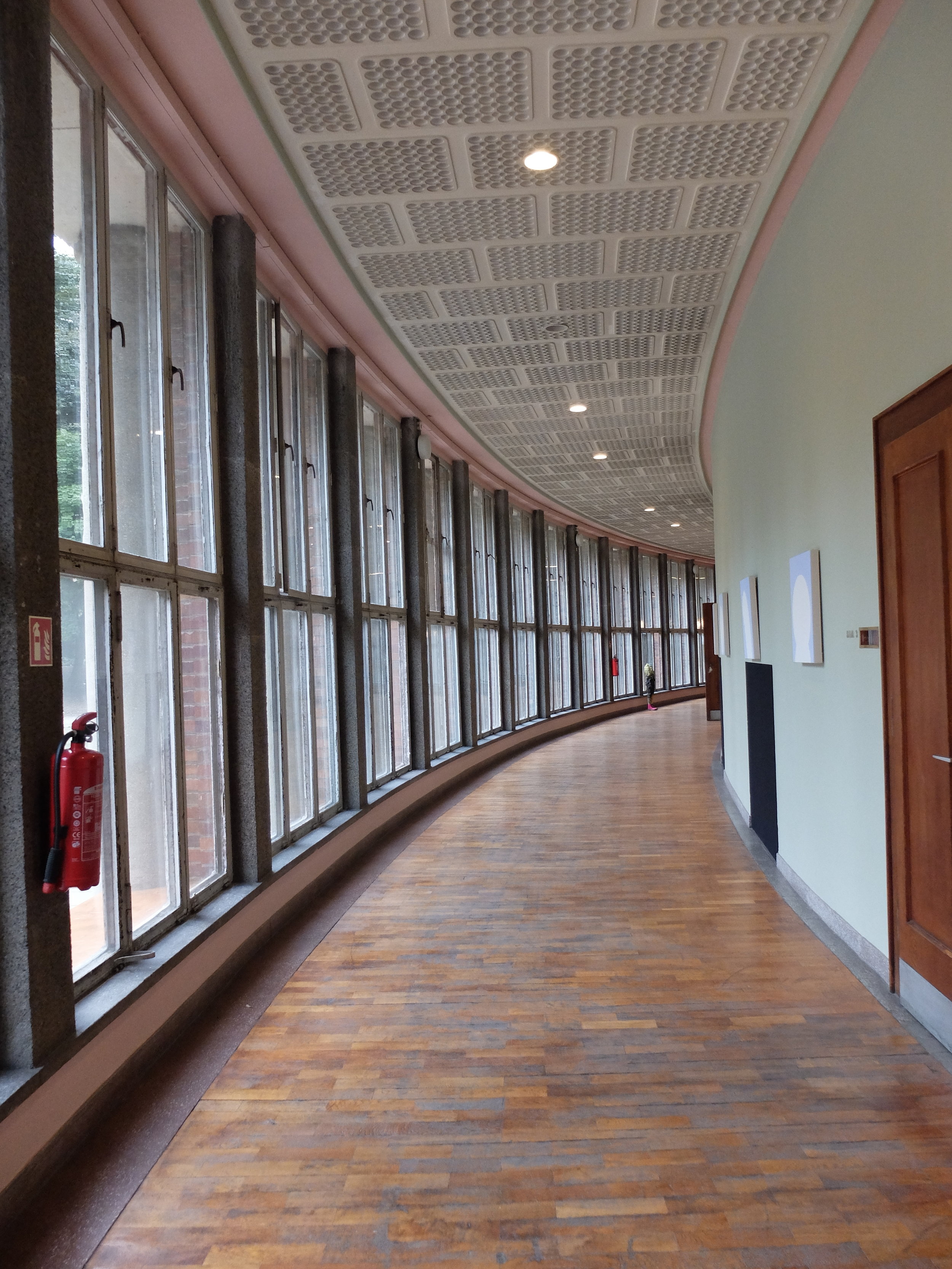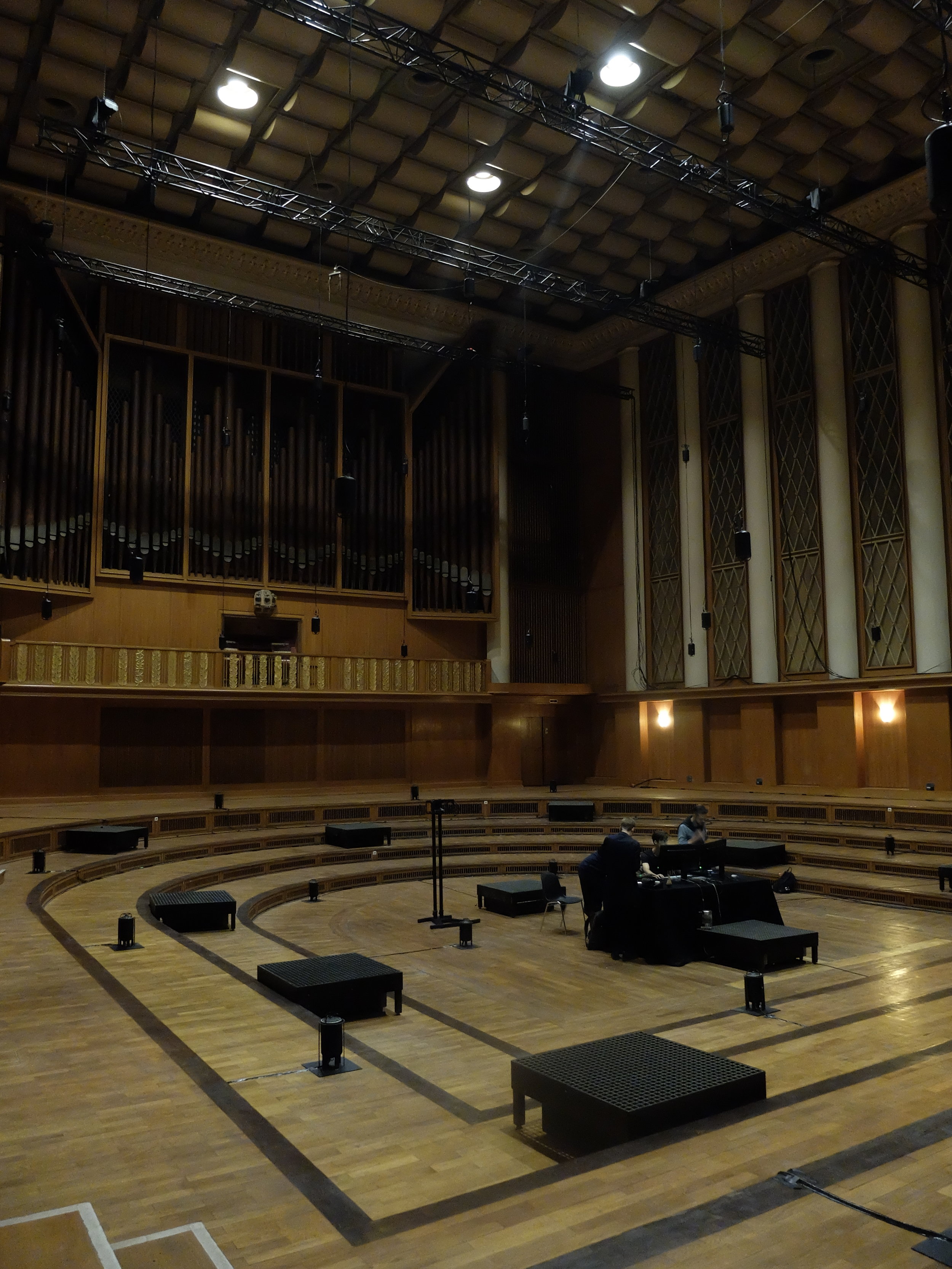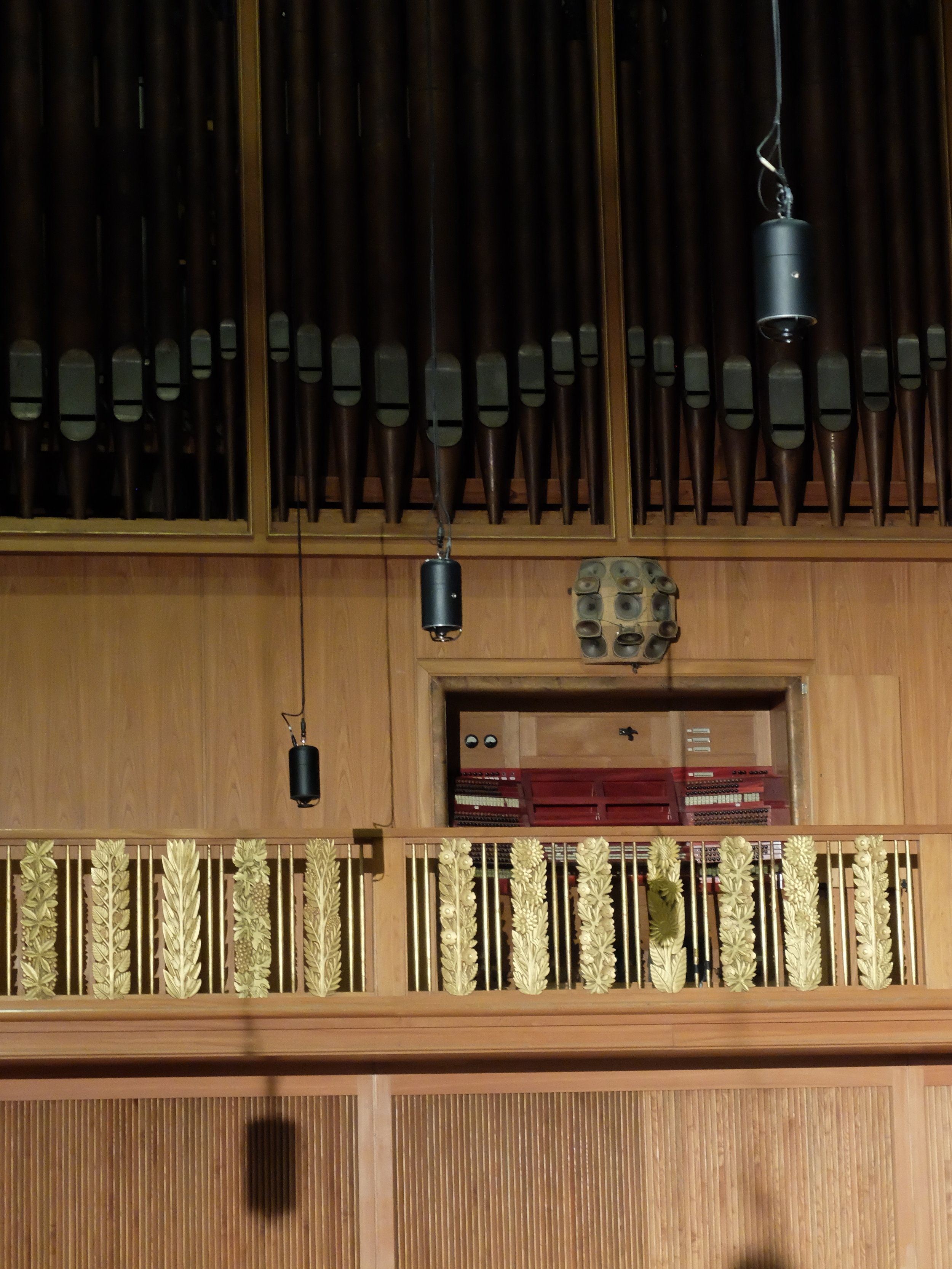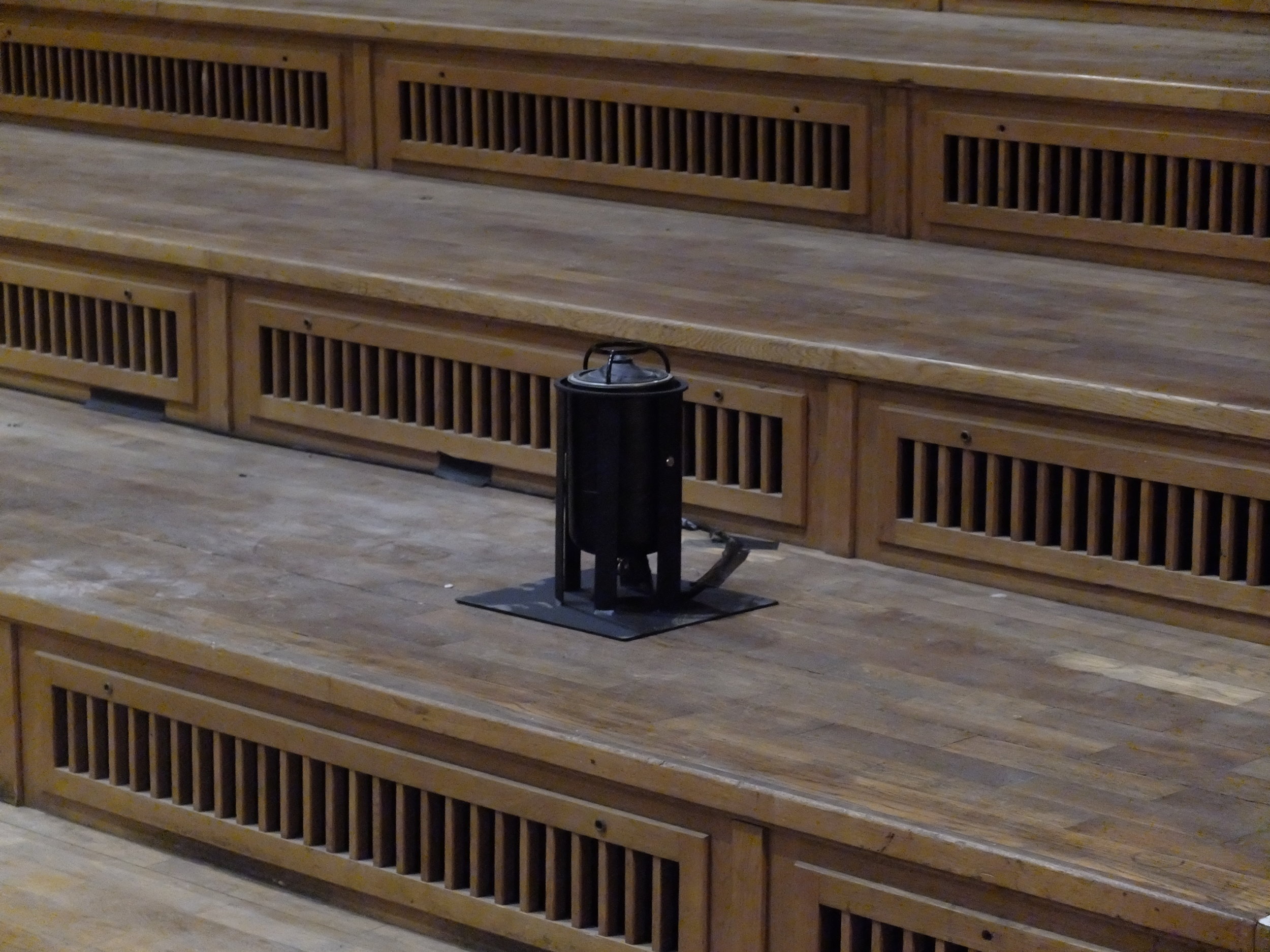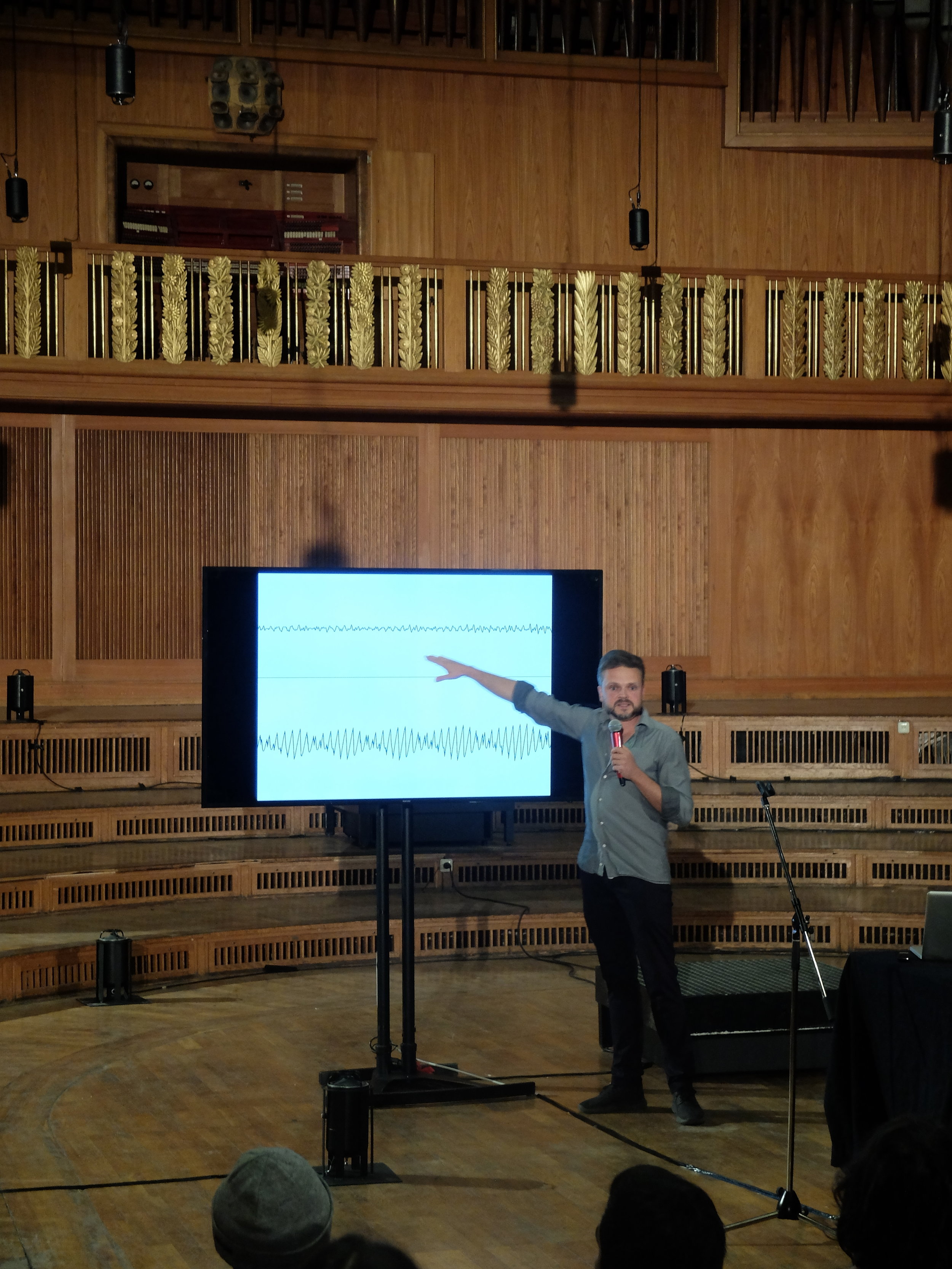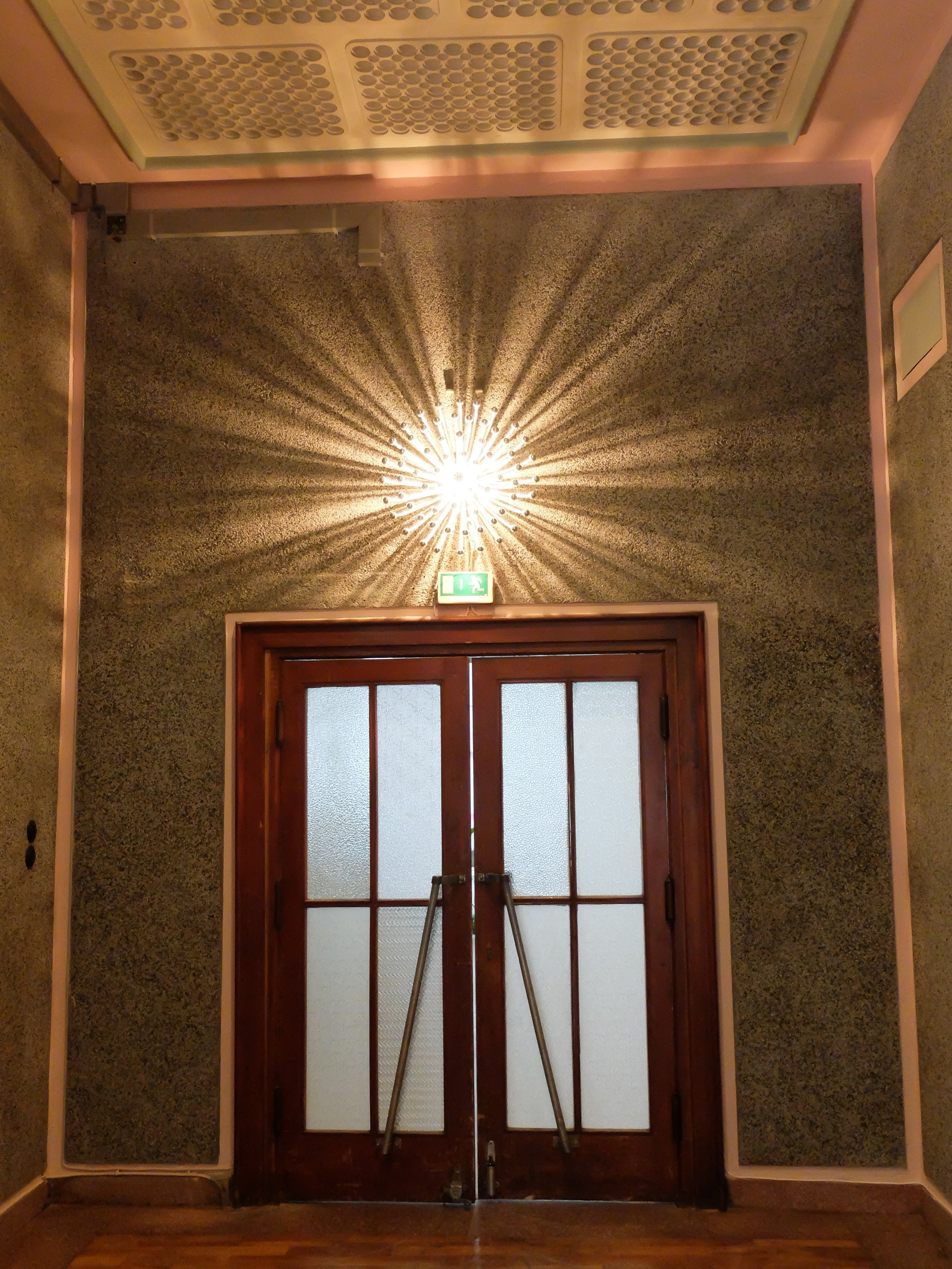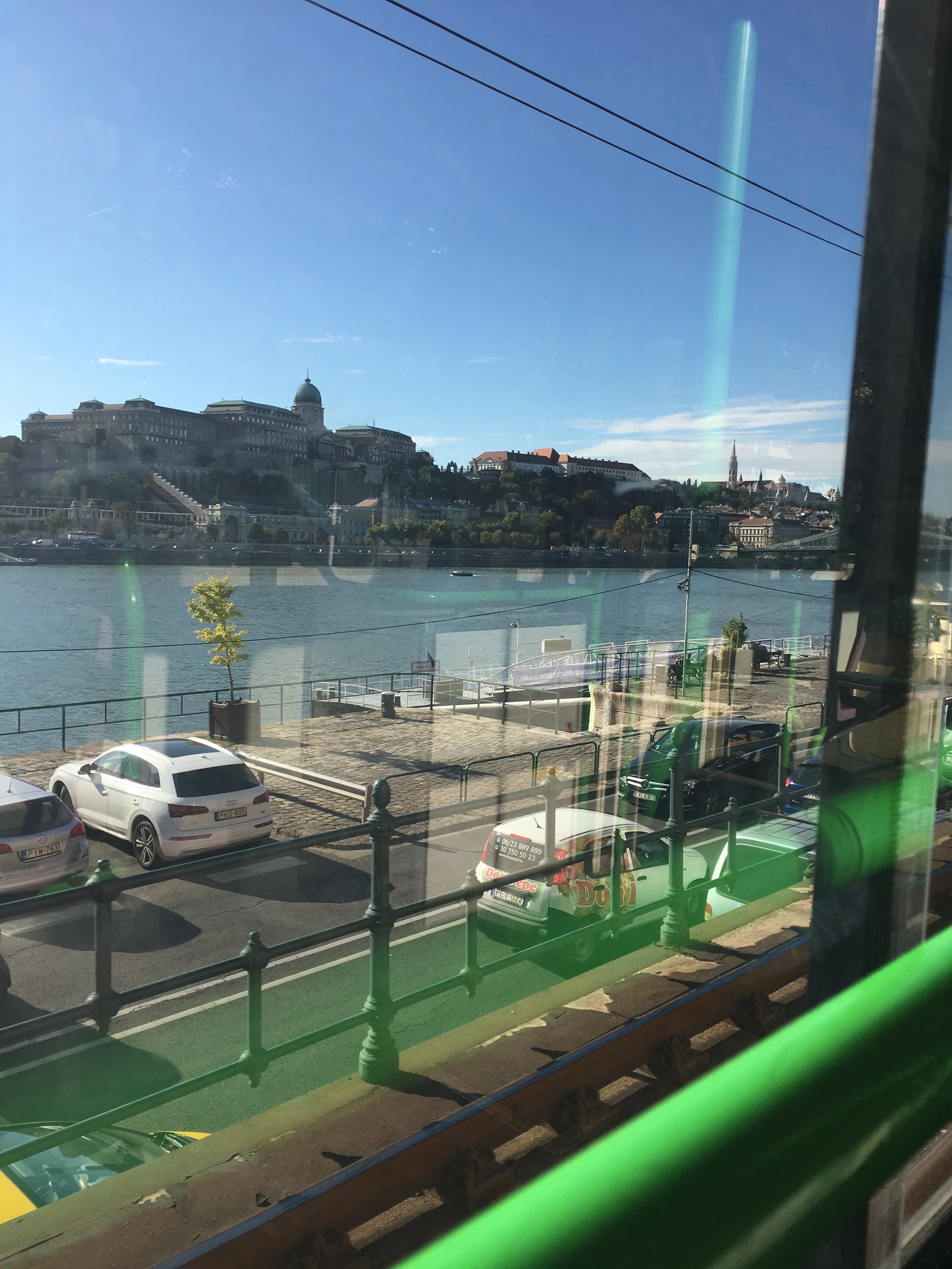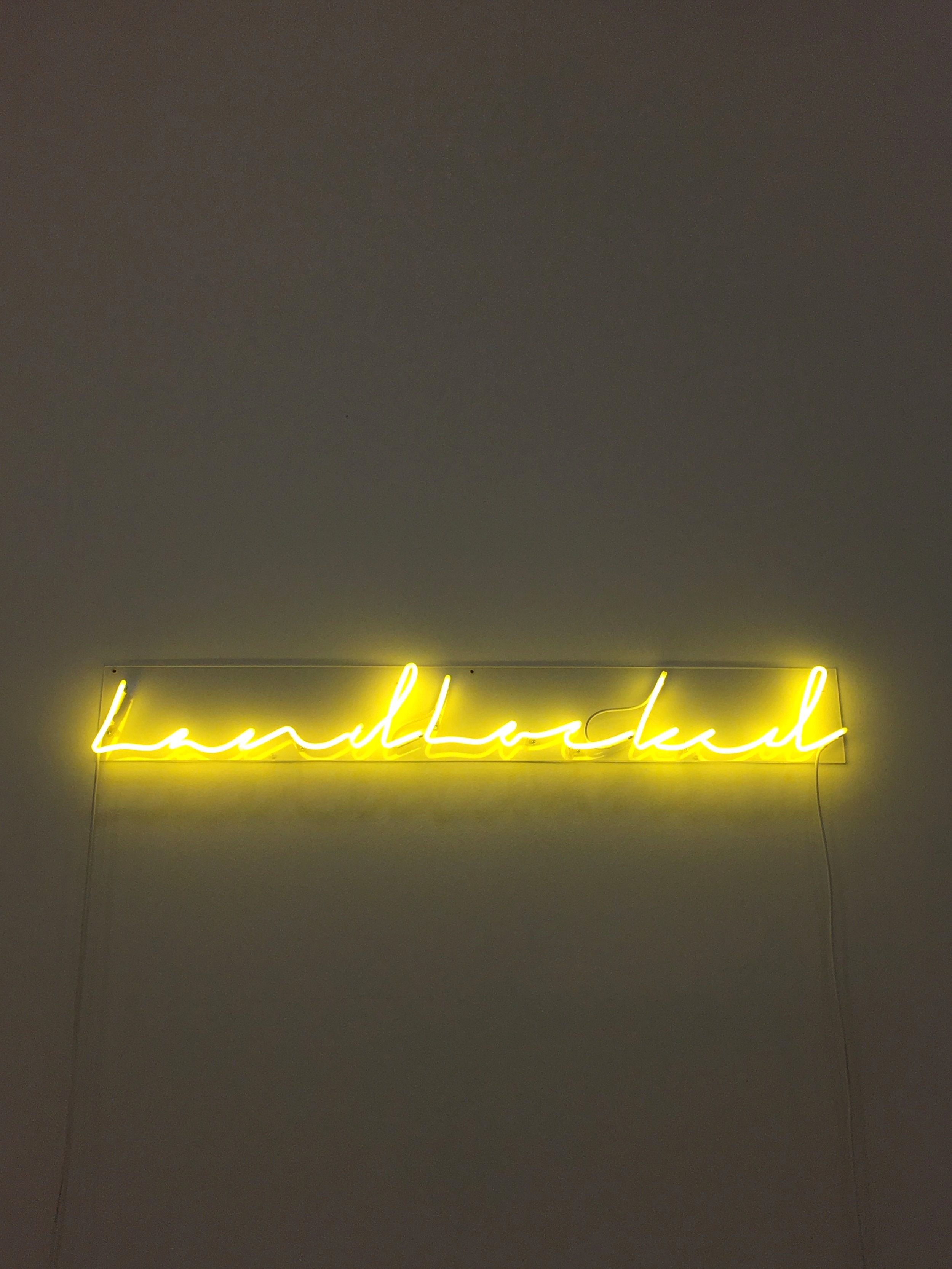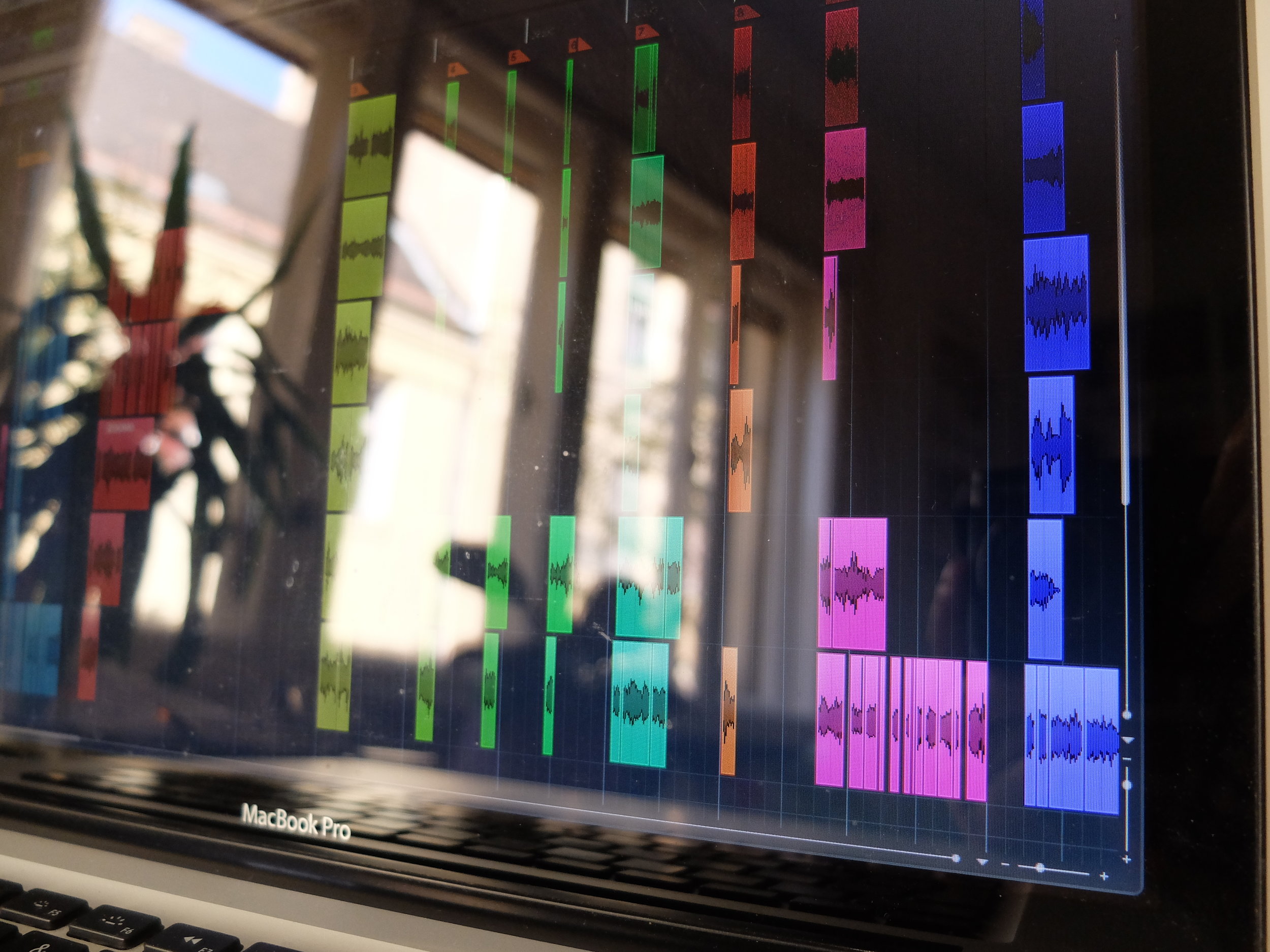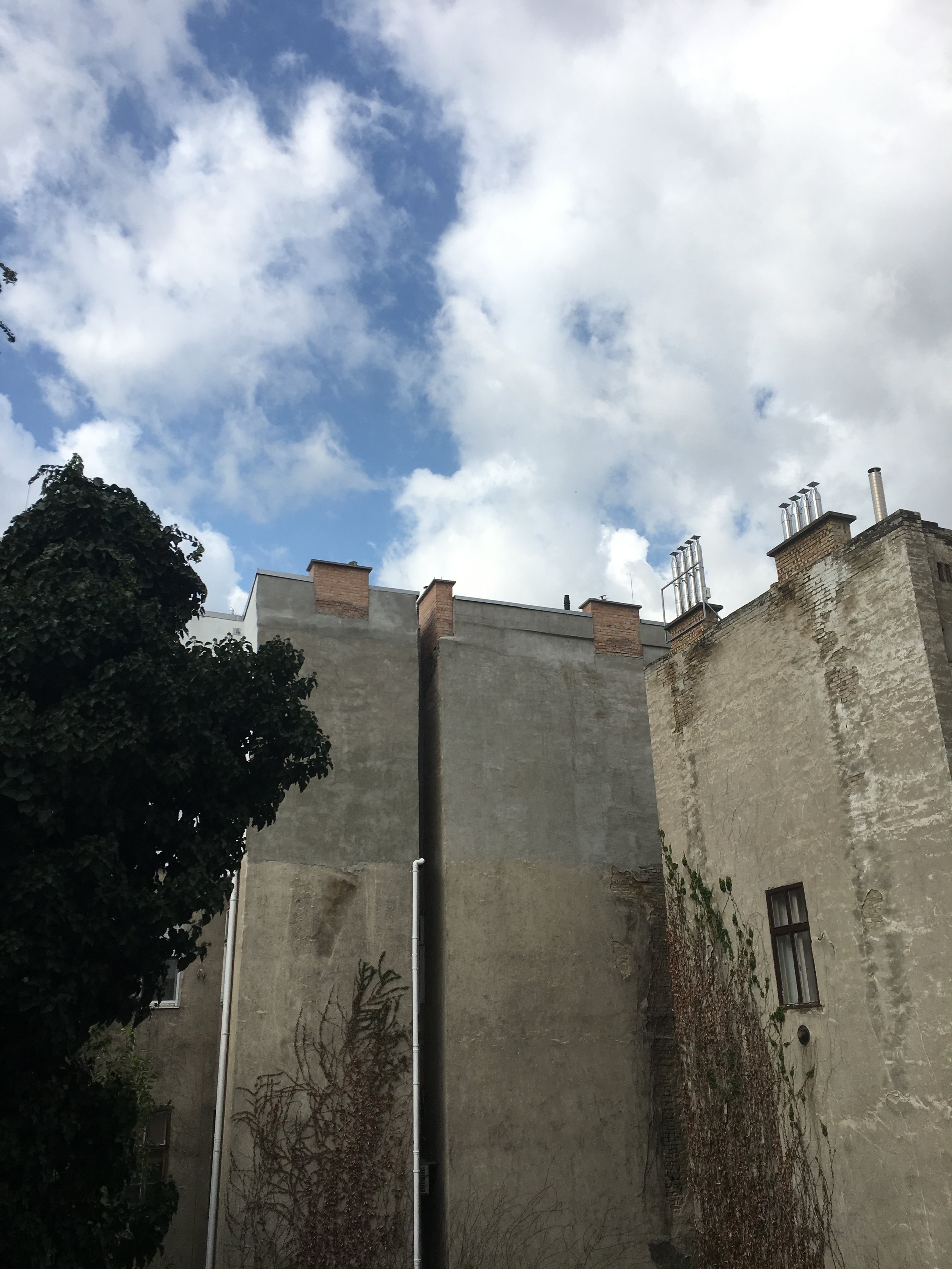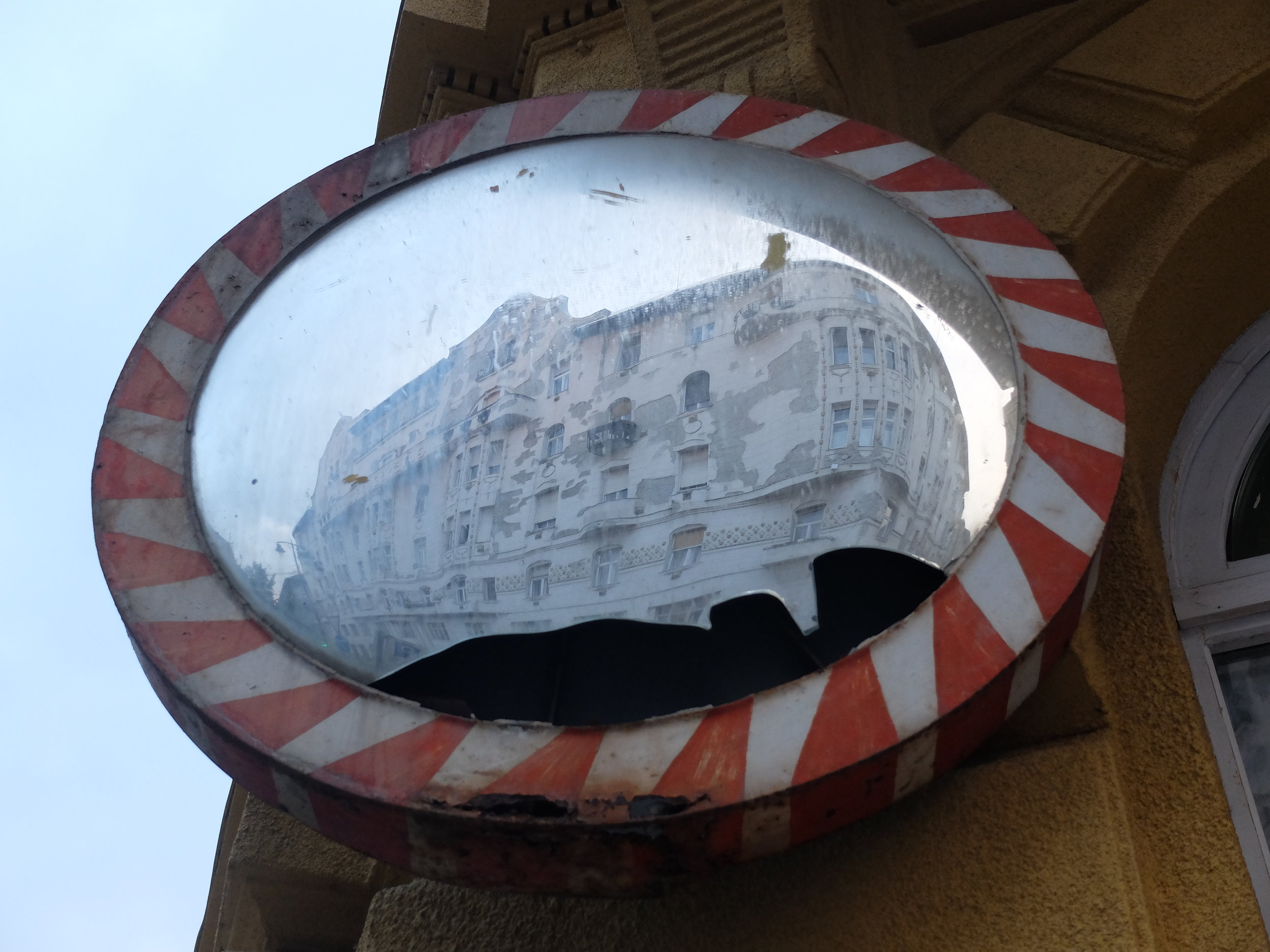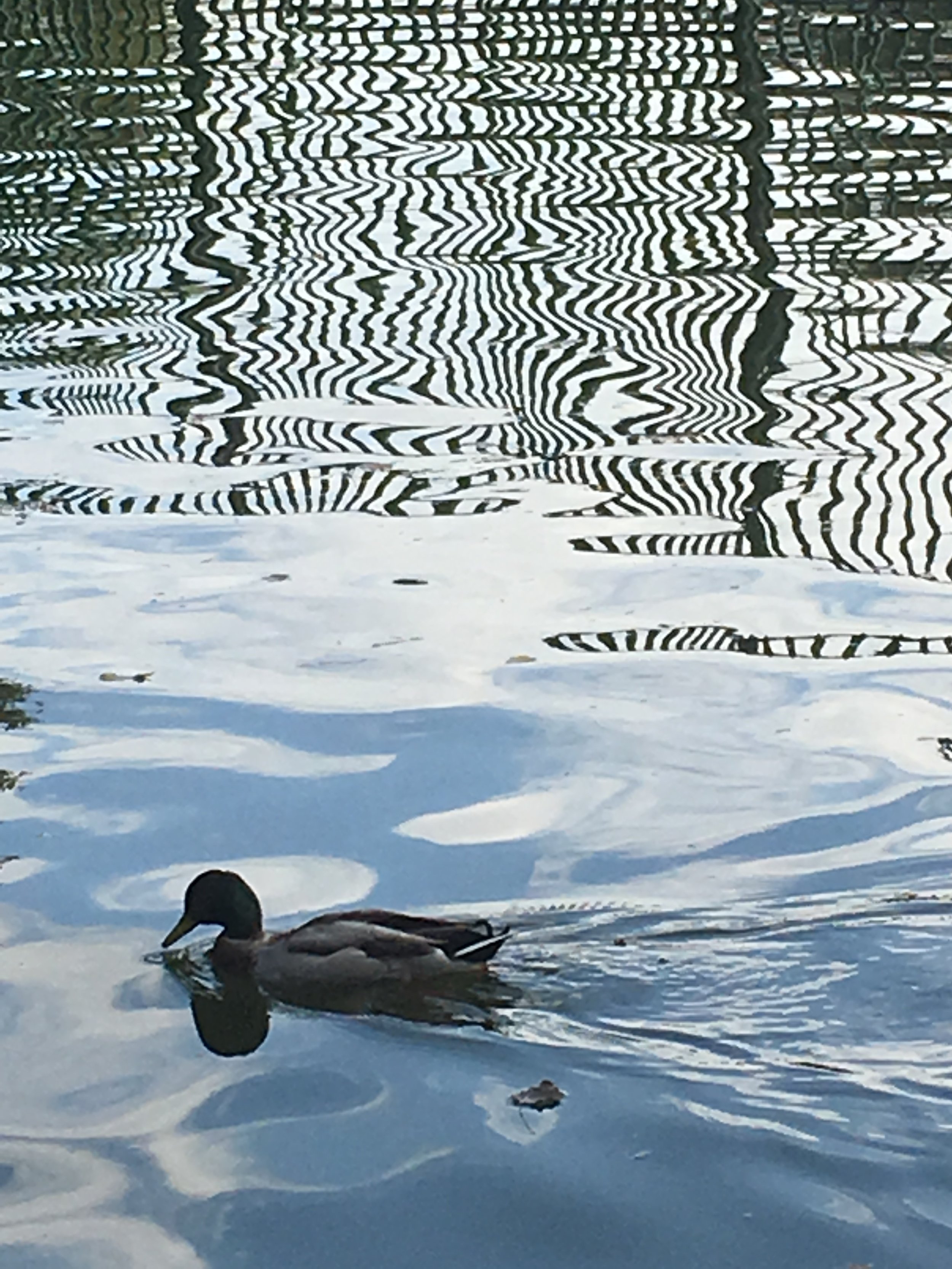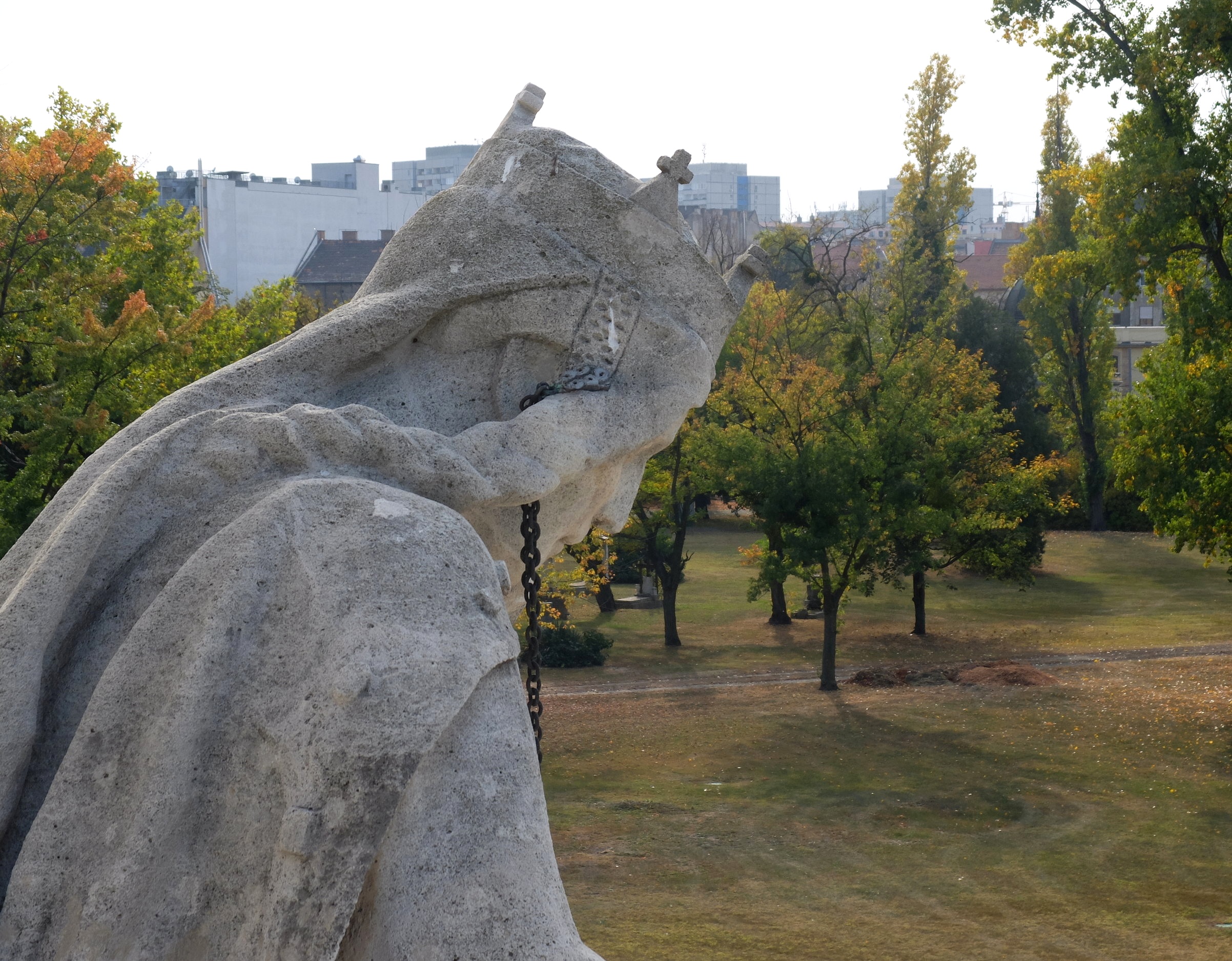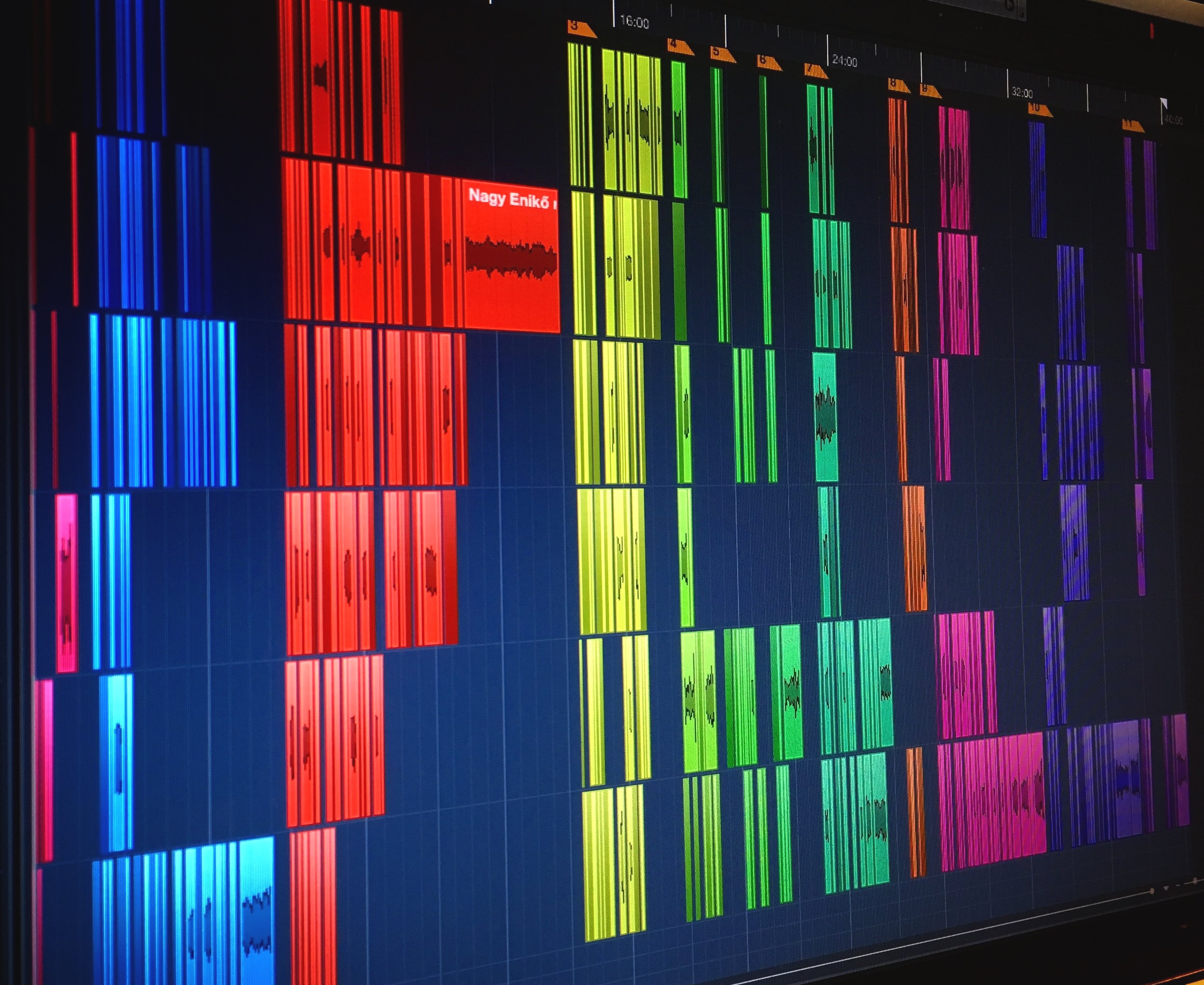9 – In the eye of the storm
In September at the start of the two-month break in the residency, in the eye of the storm, I’m in Berlin. Coincidentally the 4DSOUND system is also there – they have combined the Budapest and Berlin systems into one huge installation in Saal 1, the vintage orchestral recording concert hall at Funkhaus. This ‘Symphonic Sound System’ is made up of 100+ speakers, and multiple subs.
Paul gives a demonstration for the Red Bull Music Academy students. Vanessa Li is another 4D artist who has transferred along with the system from Budapest to Berlin. Her work is fascinating, approaching the system from an entirely different perspective. She has been using POZYX, a real-time position tracking system that makes the 4DSOUND system truly interactive for audiences. Vanessa has also been experimenting with brain wave responses as interactions with the sounds, which I got to experience back in Budapest. I love her gentle and inquisitive approach to this work. Vanessa and I sit in for the demonstration. This is a whole different experience to the Budapest studio. It’s big and it’s loud, sounds sweep predominantly across and above our heads. Paul demonstrates with a “wall” that carves across the space and I feel the wall very clearly, and, oddly (this is the only way I can think to explain) with less weight than I’d feel it in Budapest. Perhaps the dark walls, the black space beneath, the heavy wooden beams of the studio in Budafok lend the experiences of sound a kind of metaphysical weight? I have to think so since the concert hall at Funkhaus is big and airy and bright, the wood is light, I even fancy that the organ pipes lining one wall must tune the room some way.
Returning to Budapest as my Schengen Visa runs out, now it’s a risk to leave the country. Since my arrival I’ve been jumping through the various hoops required to get residency here, to enable me to stay beyond the Schengen 3 month tourist Visa. It’s complicated, a process punctuated with unnecessary frustrations. I’ve been given a temporary Visa, which enables me to stay in Hungary until January, but I’m told by various people and immigration officers that if I leave Hungary and my passport is checked, they will take this temporary Visa away from me and send me back to Australia. It’s probably a small risk and I don’t usually mind risk, but it seems too much to chance not being able to finish this project and even not being able to return for a few years. Plans to travel to Italy and Greece are put on hold. I rent a little apartment near Margit Island, then another at Gutenberg tér, and I wait it out.
Strange but lovely days in Budapest with most people I know here out of town. I explore the city in a completely different way. It’s lonely sometimes, but it’s also satisfying and meditative, feeling the weather slowly change, seeing the leaves begin to colour and then fall like soft rain. I spend a whole day in the Kerepesi Cemetery, an enormous park full of the most extraordinary sculptures and monuments. As the clouds gather I end up in the section of the park which has been reclaimed by forest, and slowly realise that this area is the children’s graveyard. The forest is peopled with tiny cherubs, clothed in vines. Friends visit and we have an afternoon idyll on Margit Island. I spend a large chunk of my time in Király bath house, mostly because of the acoustics. The ancient concrete dome is built such that the low frequencies are the ones that resonate, and all voices around the room diffuse and join together in chorus in the centre of the dome, above the water, as a low drone. It’s very loud, but never disturbing. I feel so extraordinarily peaceful in the water under the dome.
I visit the museums and parks, parks and towns outside the city, I shop in the local markets, through new friends I find the monthly secondhand clothes market where I get the boots that will keep me warm in November, and of course I spend a significant amount of time waiting with others in the immigration office … basically, I get to inhabit and understand Budapest in a way that is very personal. I’m working on a completely different project during this time, making a soundscape for a Melbourne park. But the effect of this time and the things I learned about Hungary, and Hungarians, has changed what I will end up doing in some fundamental way. I may not know the language, I may never … but I can feel this place far more deeply now. I read the history and visit the monuments to 1956, to more distant struggles, more recent struggles, and realise the darkness and pain under the beauty. I can witness the effects and significance of the current government in a way I hadn’t understood before. I’m out of the bubble of the Institute, of the Budafok magic. Meeting more people from different walks of life who are the souls of any city. This is how you begin to know a place. The Sonority piece will inevitably embrace darker emotions, deeper emotions, because of this time.
I get properly back to the Sonority project in October, listening over and over to the stories, beginning to weave them together. Paul has programmed Sonority on the Friday night, part of the CESSE Conference. Mainly as it would be more of a ‘show’ than an exhibition. A theatrical experience. Storytelling doesn’t always need to be linear of course, but folk tales by definition probably do. I do want it to be presented as a theatrical experience, for people to receive it as such. My feeling of concern I think is that in all of the 4DSOUND exhibitions I’ve been into, people walk in and out all the time, slam the door, look at their phones, even turn on the flashlight on their phones to walk around. The SSI doesn’t have a theatrical setup. There are no ushers, no acoustic doors or light controlling doors, no real control of audiences at all actually. Definitely I think the perception of this place is more of an experimental, relaxed kind of thing, and the ‘rules’ of theatre don’t seem to apply. Only in Kate de Lorme’s show, did people really stay put. And I wonder about that, why that was. Possibly the fact that she was there physically changed the perception – it became theatre?
I am keenly aware of the responsibility I have to these storytellers, to do justice to their tellings and to the versions that they tell. This brings up a complicated question for me as I begin to edit the recordings. I can’t cut any of the stories. Often when working with poets and storytellers it’s a collaborative thing where if I think that it might work better, flow better, I will suggest cutting or shifting sections … but this is different. I do not have the warrant to do that. I also set out with this project to reflect the truth as it’s told, and to respond to the sounds and stories of this place. Obviously, I am changing the way the place sounds, the way a story is told. I am interpreting, and I am abstracting. But there is, I feel, I line that I don’t want to cross – and that line itself makes this project different. Sound artists, composers, we remix the world and those in it to satisfy our own agendas and desires. I’m interested in how I can create something meaningful to those other than me through treading more lightly … I don’t want to cut these stories. I need to find a way to work with the rhythm here, not adapt it to my own.
So I listen, listen, listen. Find the natural pauses, the song of the language and the singer, and I shift them around subtly to where they work together. Csenge has transcribed each story, and I have broken up the story into 11 broad 'chapters’, or scenes. So for each scene, a certain amount of action or exposition happens. In each scene each teller’s story moves forward essentially to the same place. Each of the stories gets there in different ways. At times, there is only one storyteller continuing, when the others have stopped (moved on to the next scene). I like this – each voice has its own moment alone. Mostly however, there are six voices in my head. And I’m working in Cubase, in headphones. If it sounds bearable this way it can only get better in 4DSOUND!
Working in Cubase, cutting up the stories into chapters.
There are broadly 11 scenes. Some are very short, under a minute, some longer – the longest is about 4 minutes. Leaving about 1 minute space around scenes, it is approximately 50 minutes now. Add to that a walk-in state – which could be 15-20 minutes – and also the folk song ending. It will be a 60 minute show, at least.
I’ve now written a synopsis/storyboard for the show. At the time of writing it down, I feel as though it’s still fragmented but it has a momentum of its own and a lot of this work now may involve me setting the scene and the dynamics or mechanics of movement, then getting out of the way of the story.
Synopsis
Walk-in state:
Six environments, defined ‘regions’ around the room, which are static at the walk-in state, movement only within their ‘regions’ - some overlap. On walls or columns in each ‘region’ projected video of the storytellers. This I imagine being slightly abstract, not too ‘portrait’, using some movement of landscape captured as well as Ana’s up-close shots of each face, to create a ‘flickering’ effect. These are the only light sources. This for as long as it takes for audience to enter, and to settle. [*six projectors needed for this]
Gradually, the atmospheres begin to shift - swirling, counter-clockwise, very very slowly at first, dancing feet counter-clockwise, just a suggestion … as this happens the videos flicker and stop.
Darkness.
Ascending warm tone emerges from below, fills the room. “Egyszer volt, hol nem volt” (once upon a time) collage of voices, swirling.
This resolves into scene 1 - the preface/story set up, all voices.
Single elements from their ‘regions’ remain with each voice but the predominant sound is of the voice. Here it is important to establish the voices, and the movement of the voices, the harmonies and interest in listening to them.
The voices do not remain static in place. They move around, in a kind of ‘dance’ that reflects the dance of the women in the story, also Hungarian traditional women’s dances, that move in a circle. So sometimes when one or two voices are speaking they will move, take centre, move back. When all are speaking they may move in a circle, or sway.
We descend, each scene descending further. Signified by ascending tones. As we descend, light changes colour. As we first enter the forest, haze introduced (?)
Copper forest (descend)
Silver forest (descend)
Gold/diamond forest (descend)
Arriving at lake/palace, inside palace, party. Dancing feet, music, and the lake, ascend from below.
The dancing feet multiply, dance counter-clockwise around the room. The lake transforms into sharper “razor” effect/Musical elements are abstracted, sharpened.
We return to the bedroom (ascending)
This journey repeats in some stories. We go through the same descent/ascent, but faster. (not exactly repeating anything; using the musical tones together, i.e. the copper/silver/diamond, as music)
Descending tone, reversal of opening .. bring it back to the ‘swirling’ atmospheres from the opening, reverse direction
Story resolution - happy (and unhappy) endings.
Bringing us back to ‘our’ world … video fades or flickers back in - perhaps the same, the faces, or perhaps something different?
“Coda” - Csenge’s voice solo, where the hero explains advice his mother gave him. During this, the ‘mother’ song ascends from below the floor, very quiet until Csenge is finished, then the song rises and fills the room, keeps rising, fades and disappears above.
Silence
